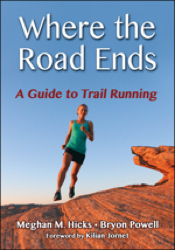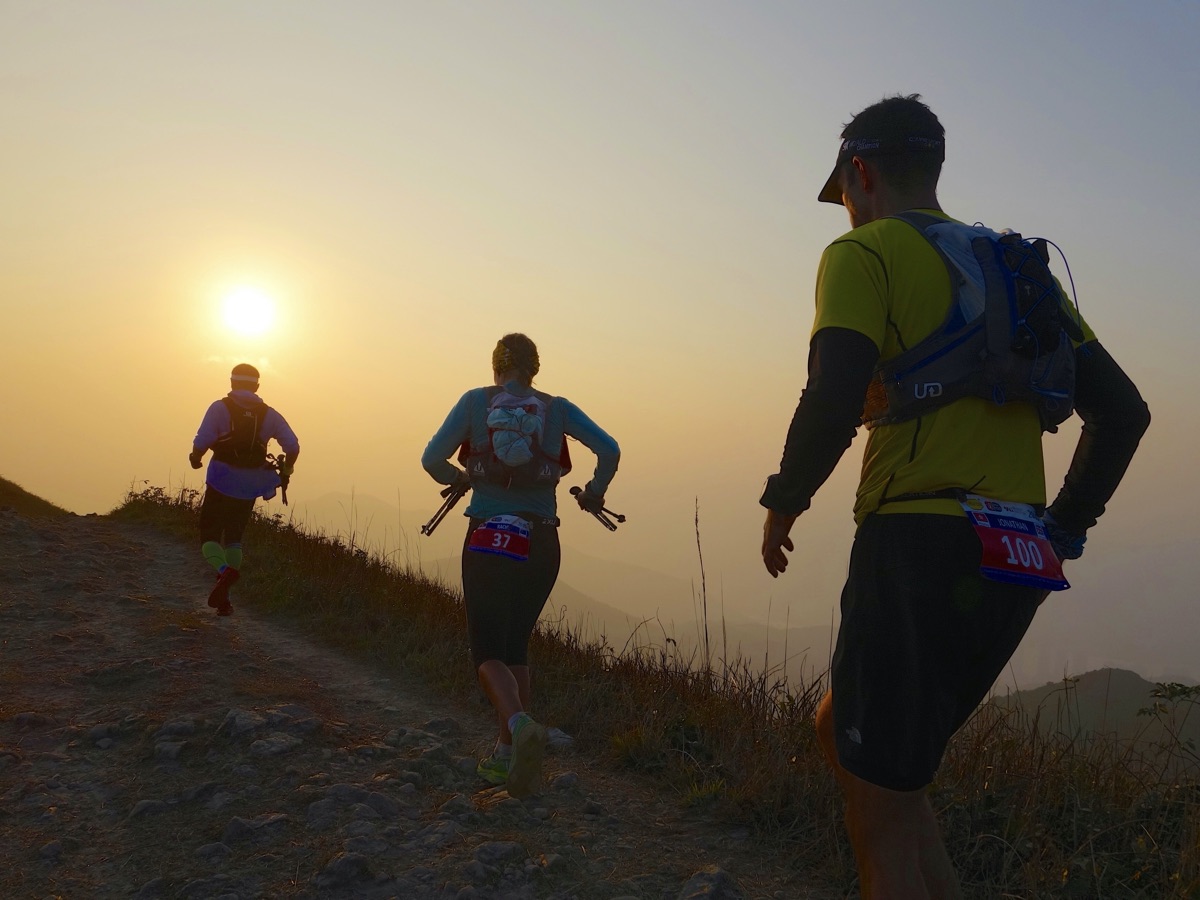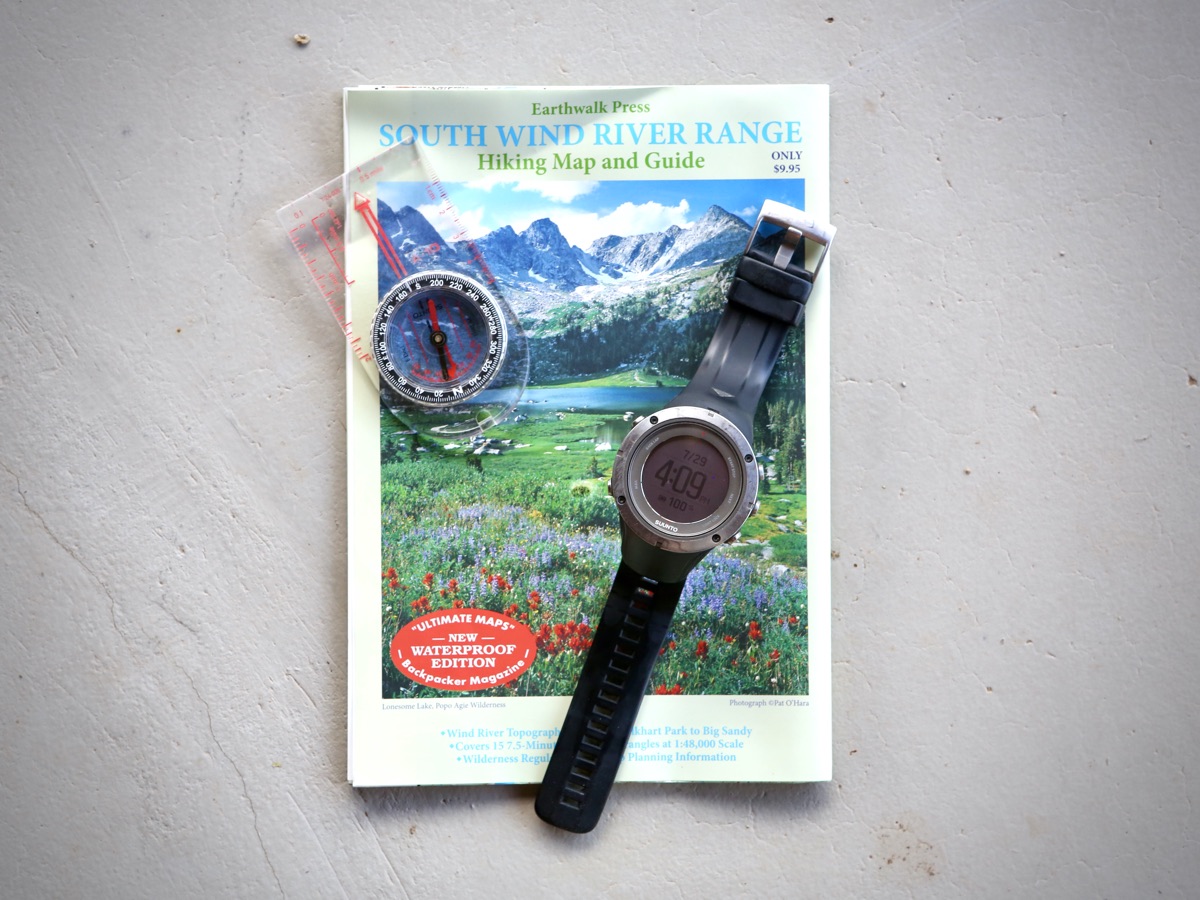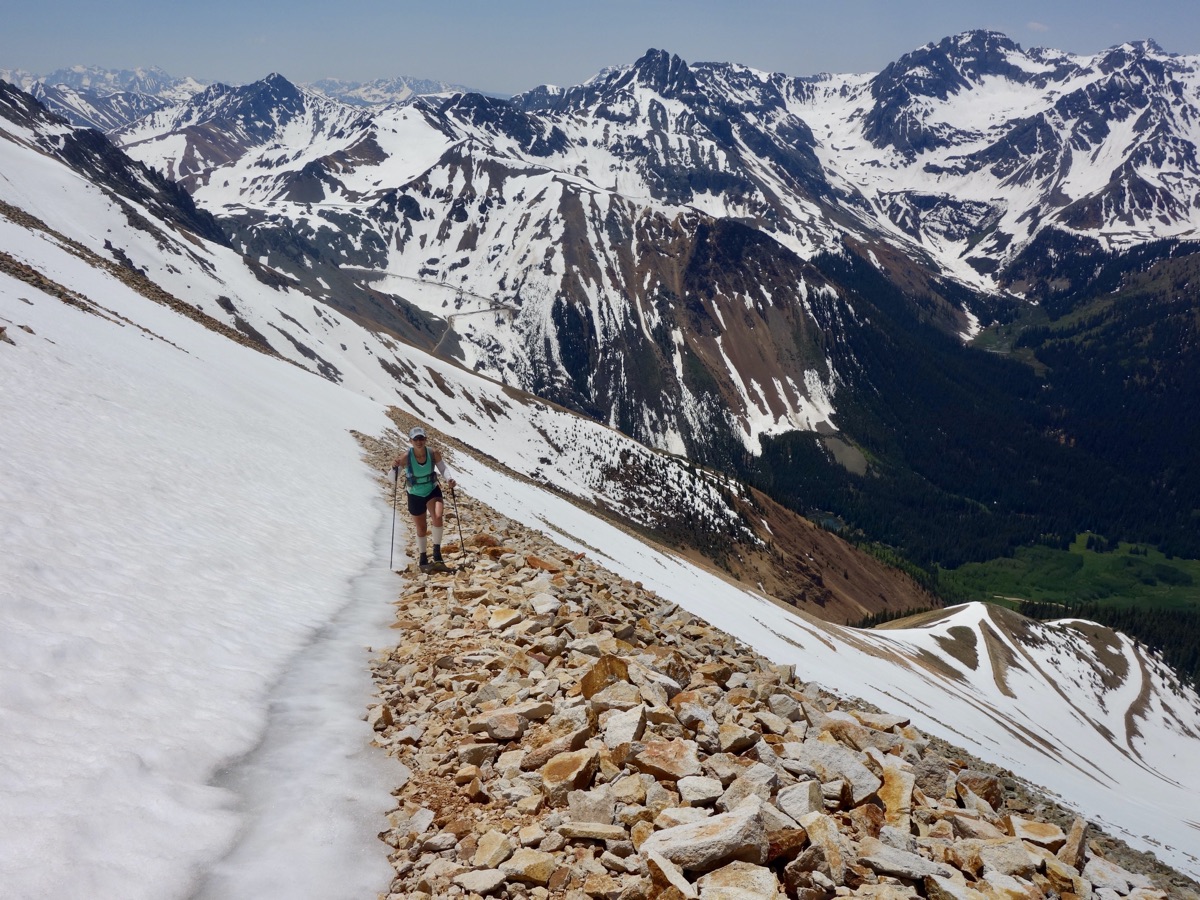
Like this article? Get your copy of the book “Where the Road Ends!”
Welcome to this month’s edition of “Where the Road Ends: A Guide to Trail Running!” That’s the name of both this column and the book Meghan Hicks and Bryon Powell of iRunFar published in 2016. The book Where the Road Ends: A Guide to Trail Running is a how-to guide for trail running. We worked with publisher Human Kinetics to develop a book offering the information anyone needs to get started, stay safe, and feel inspired with their trail running. The book Where the Road Ends teaches you how to negotiate technical trails, read a map, build your own training plan, understand the basics of what to drink and eat when you run, and so much more.
This column aims to do the same by publishing sections from the book as well as encouraging conversation in the comments section of each article. We want you to feel inspired and confident as you start trail running as well as connected to iRunFar’s community of off-road runners!
From clothes to shoes and from running vests to headlamps, using the right gear for trail running will improve your experience. But, you don’t need to be a gear geek–unless you want to be! A little gear goes a long way.
This article is the third in a three-part series on the basic trail tools you might want to make your trail running more comfortable, enjoyable, and safe. In part 1, we talked about trail running shoes, and in part 2, we discussed clothing. Here in part three, we cover packs, flashlights, navigation equipment, and a few other accessory items to aid your off-road running. All of these articles are excerpted from Chapter 5 in Where the Road Ends.
Carrying the Essentials: Running Vests and Other Ways to Carry Gear
From time to time, and perhaps as your runs get longer, you might want to bring a few things with you on a trail run. Think extra clothing layers, a snack, some water, or maybe a light for night running. Keep it simple when you can! Can you carry your car key and an energy bar in the pockets of your clothing? Can you tuck your pair of gloves in the pocket of your windbreaker? A light jacket or an extra long-sleeve shirt is easily tied around your waist. And if you want a little water, consider a handheld bottle that uses an adjustable strap to hold the bottle against your hand. If you still want extra carrying capacity, a waist belt or running vest can greatly add to what you’re able to bring along with you on the trail.
For a simple and lightweight solution for carrying a limited amount of gear, consider a waist belt. They range from a step-in fabric tube (it lays flat and almost unnoticeable around your waist) with openings into which you can shove items to a small pack with a rear pocket that clips together in the front. For runs with long stretches without drinkable water, you might pair a handheld bottle with a waist belt, swapping out the bottle that you’re carrying in your hand with one from the belt as needed.
Running Vest
To carry more gear or get things off your waist, slip on a running vest. Running vests come in a range of capacities, from little more than a mesh sleeve in the rear designed to carry up to a two-liter hydration bladder with a few small, easily accessible pockets on the front straps, to a vest with a compartment on the back that can carry several extra layers and gear you might need for a long day out.
The sweet spot for a new trail runner would be a running vest with approximately five liters of storage space in the main, rear compartment. That’s enough storage space to carry a few liters of water and some extra gear for your longer adventures while still being light and compact enough to use if you want to jump into a race with it.
Lighting the Night: Headlamps and Flashlights
A lighting system makes trails accessible around the clock. Trail runners have two main options on the lighting front: headlamps and flashlights. Of the two, headlamps are more popular because they leave your hands free to run with a natural motion, scramble over obstacles, and manipulate any other items that you’re carrying. In addition, they automatically track wherever you’re looking.
Handheld flashlights have their advantages. For one, they’re great at pinpointing objects, whether it’s a rock on the trail, a distant trail marker, or an animal in the woods. Held at waist level, the lower angle of a flashlight is better for casting shadows of low-to-the-ground obstacles. These shadows enhance your depth perception and therefore enable you to react appropriately instead of running overcautiously on uneven terrain.
Some trail runners like to wear a light around their waist or on their chest. Commercial products on the market integrate a light on the front of a waist pack or the chest strap of a running vest. This solution allows hands-free running while enhancing beneficial shadows on trail obstacles.
You might consider running with both a headlamp and a flashlight. This set-up provides great overall light with a head-synced light source along with a shadow-casting, spotlighting source.
One more thing, don’t discount the value in having a light source so that you can be seen. Whether you have to run a few miles of road before hitting the trail or you need to cross a road, you want to let the drivers know you’re there. If you’re often running in the dark and around traffic, consider a headlamp or flashlight with a rear-facing, blinking red light that you can turn off and on as needed.
Navigation Equipment
When you venture into new-to-you terrain, you’ll want some navigation equipment to help you find your way. Get a map and small compass! We know, tons of electronic devices are available to assist with navigation, but we strongly feel that trail runners should carry paper maps and small compasses as back-ups when adventure running. Almost everyone who uses technology knows that batteries seem to die at inopportune times.
Okay, let’s talk about those electronics. Many GPS running watches have a helpful back-to-start function that plots your course to that point in case you need to backtrack your way out of going off course. You should also be able to preload GPS waypoints or even entire routes to keep you on the right track. Some GPS watches also have a compass feature.
Map apps that you can download to your smartphone are another awesome navigational tool. You can use them to plot your route ahead of time and stay on course in the field. These apps are usually designed to work both in and out of cell service, but in many of them you’ll need to download maps ahead of time for no-cell-service use. Also, these apps generally have a compass built in.
Scenario-Specific Gear
Here are a few more kinds of equipment more suited to specific conditions or gear used because of personal preference.
Gaiters are pieces of fabric that attach to your shoe and cover the upper of your shoe and ankle. When trail running, the primary purpose of gaiters is to keep debris out of your shoes by covering the shoe openings at the tongue and ankle as well as to provide an extra barrier over the mesh portions of the uppers. Gaiters can be effective in keeping dirt, debris, sand, and snow out of your shoes. On the other hand, gaiters can trap heat, leading to damp, sweaty feet, and they can keep shoes from draining or drying should they get wet. Gaiters also make adjusting your shoelaces more difficult. Some people love gaiters, and others rarely wear them. Give them a try and see if you like them!
Trekking Poles
Sustained, steep trails are where trekking poles are most useful. If you already have them with you, they can provide a boost on shallow climbs and even a bit more pace on flat ground when your legs are fatigued. They can also be useful as a third or fourth point of contact when crossing a stream with uncertain footing or swift water. Finally, they can be used to take some strain off your quadriceps on prolonged descents. Then again, some people don’t use them, so give them a chance on your next big climb and see what you think.
Traction Devices
Winter runners love traction devices. A multitude of manufacturers offer a range of designs, from those with a small bit of metal to help you stay in contact with the ground when it’s a little icy, to pointed “teeth” that allow you to dig in when the snow is deep and chunky. The cheapest way to add traction is to “screw your shoes.” This means inserting sheet-metal screws into the outsoles of a worn pair of running shoes. (Most folks convert a previously used pair and dedicate them to this use.) A number of similar commercial products are on the market, but 3/8-inch or 1/2-inch (10 or 12 mm) #8 hex-head sheet-metal screws from the hardware store work just fine. You can find full instructions on how to make a “screw shoe” online.
Excerpted from Where the Road Ends: A Guide to Trail Running, by Meghan Hicks and Bryon Powell. Human Kinetics © 2016.
Call for Comments
- From waist belts to running vests, and from headlamps to GPS watches, what are the basic pieces of gear you take on most of your runs?
- And, what gear hasn’t worked for you?




